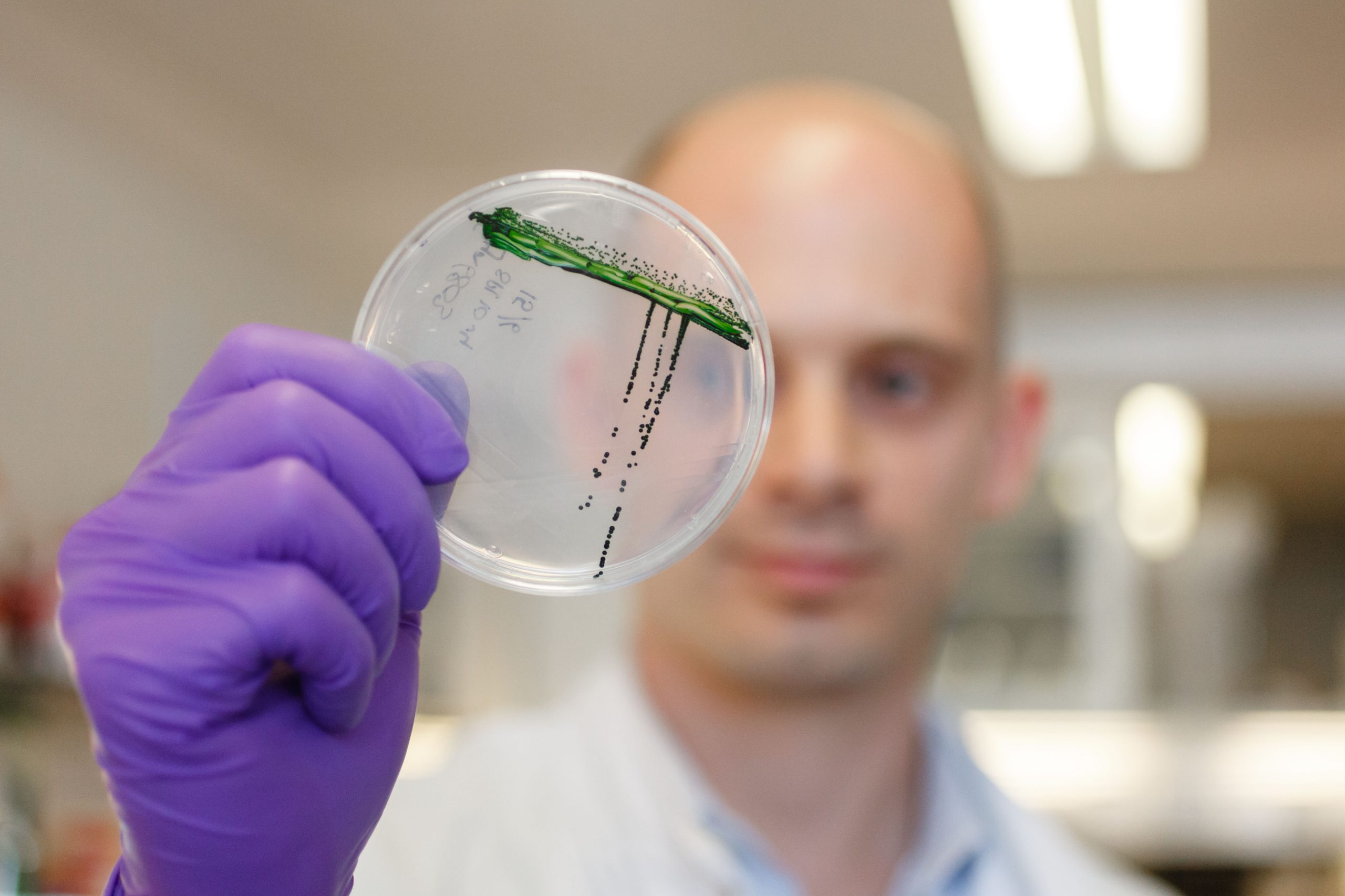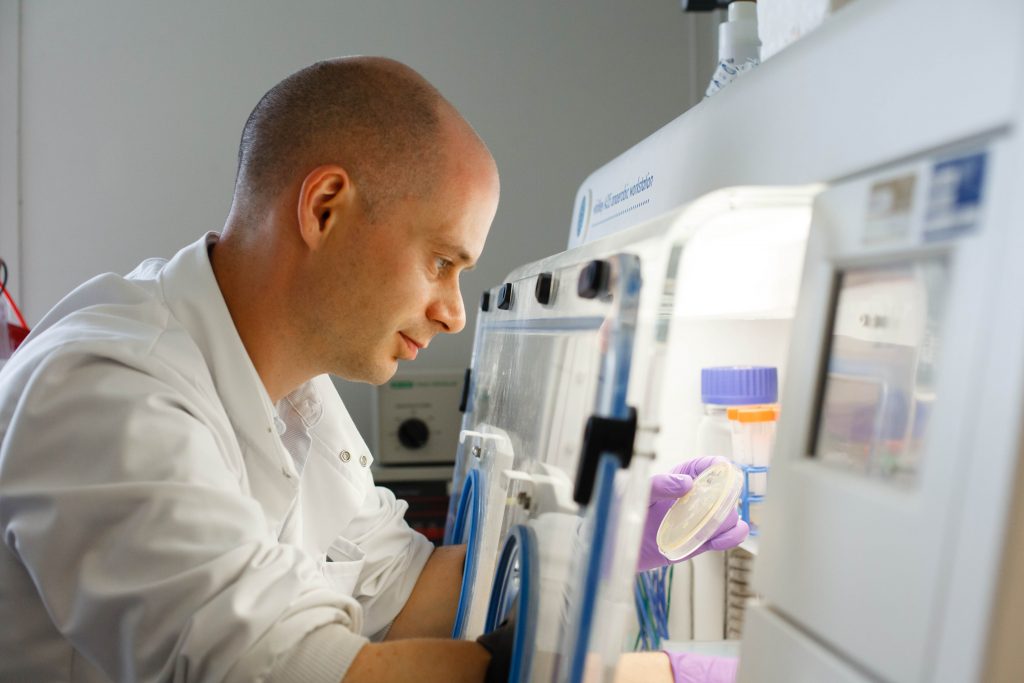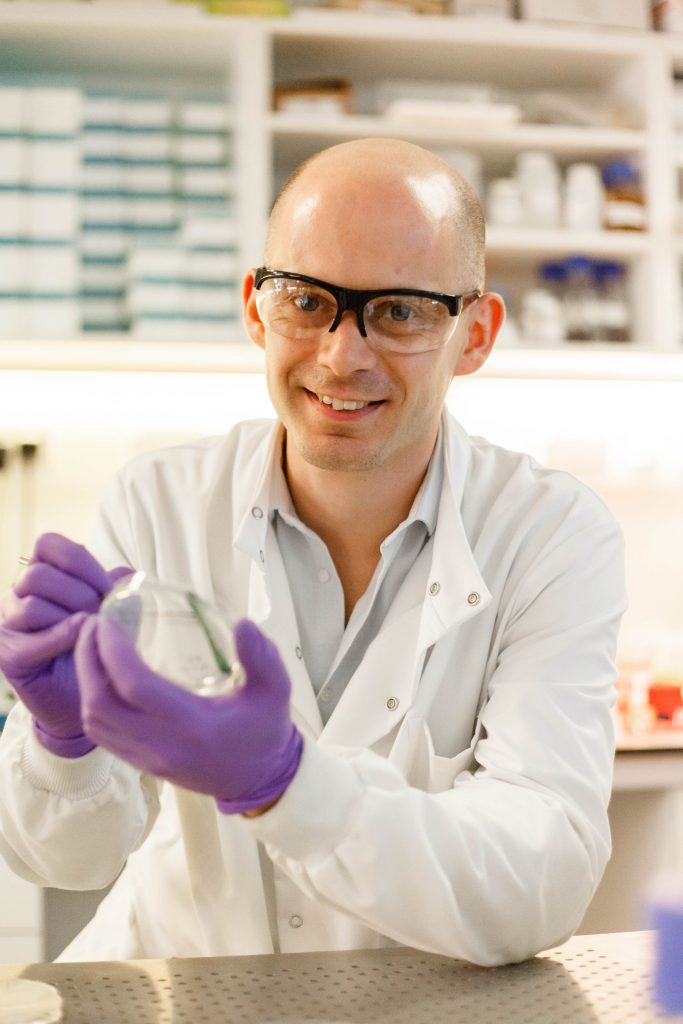
December 9, 2020, by Jo Gregory
A shock to the system: how biotech is using nature to tackle climate change.
Dr John Heap is Associate Professor in Synthetic Biology and Metabolic Engineering at the University of Nottingham and member of the Green Chemicals Beacon. His recent grant successes include funding from the BBSRC to produce high-value chemicals using biotechnology. He is also an Honorary Senior Lecturer at Imperial College London. In this interview he talks to Jo Gregory about his research, tackling climate change and working with metabolic superpowers.
How would you describe what you do to an ordinary person?
I use biological technologies for society and the bioeconomy. These technologies, known as synthetic biology, engineering biology or biotechnology, seek to improve and redesign systems that are already found in nature, or to design new ones from scratch. The results are molecules or cells much like natural ones, but which are more suitable for particular applications. So the long-term motivation is how we transition to a sustainable future and the role that biological technologies play in achieving that goal.
In terms of our specific interests and specialties, sometimes we describe our work as synthetic biology-driven metabolic engineering. Metabolic engineering is the process of modifying organisms to change their metabolic properties. An example of this is that we can change something about how cells consume substrates or take food in. In synthetic biology and biotechnology the most popular organisms to work with are model organisms which are the conventional organisms that we know a lot about for example E. coli or yeast. They are easier to work with and so there’s a lot of expertise in this area. But there are many other interesting organisms out there that have useful properties. We sometimes call these metabolic superpowers because they can do interesting things like grow on waste gases or produce different products. These non-model organisms are the bacteria our research team have spent a lot of time working on as it’s important to be able to access a wider range of organisms than just the classic model organisms. Over the last ten years, we’ve seen the development of some state-of-the-art new technologies which so far have mainly been used in model organisms. What our team are trying to do is bring those two worlds together to try and bring the best synthetic biology technologies and make them move forward or unlock the potential of some of these more interesting organisms.
What are the main challenges of the research you do?
There are different kinds of challenges. One example being that if you take a piece of DNA that you’ve designed for one organism, a lot of the principles suggest it should work nicely in a different organism, but in practice you find that’s not the case. So one of our challenges is understanding why this happens and then coming up with different sets of design principles. You could think of it as being like our local dialects and we are learning the different languages. Sometimes there are more fundamental differences, for example, there are some enzymes that are poisoned or deactivated by the presence of oxygen. Some organisms produce oxygen naturally like photosynthetic organisms including plants or the microbial equivalent of plants like algae and cyanobacteria. This presents fundamental incompatibilities. How do you get an enzyme that must avoid oxygen to work in an organism that produces oxygen? Some of those are very hard to solve, but nature has its own solutions to some of those things, for example, the organisms that produce oxygen sometimes make specialized compartments where they don’t let oxygen in and they do their oxygen-free stuff in this part of the cell.
How often do you have a wow moment?
I think it varies as some parts of projects that you take on are lower risk and they don’t knock your socks off. You know they are basically going to work in some way. That doesn’t mean it’s not important. To use an engineering analogy I sometimes think of a problem as a dial and that the answer is going to be somewhere on the dial you just don’t know where it is at the start. But you figure out where it is on the dial and then you’ve learned what you needed to. It doesn’t set the world on fire but it enables you to move forward in that area. But then you also have those moments of realising that if you put two particular things together something awesome might happen, and you don’t know if it will work or not and sometimes it doesn’t. Sometimes you can’t figure out why, but sometimes you do, and those are the ones that are a wow moment.

How has the closure of labs due to the pandemic affected your research?
It’s definitely been challenging as we moved the lab to Nottingham from Imperial towards the end of last year, and setting up a new lab takes time, doing all the safety stuff, moving and installing equipment and infrastructure, and so on, so we had only really been up and running for around six weeks before we had to close again for four months during lockdown. We’re back in the labs now and really happy with how it’s going, but it has meant that we weren’t able to be as productive in the lab this year as we would have been.
How are you finding working from home rather than the lab during a pandemic?
Before lockdown, as head of a research group, I spent most of my time with an office quite near my lab and I liked being able to pop in and see what my team were working on and having that immediate connection. So it’s been a weird year to start somewhere new. The usual way that you would get to know people professionally, walking along the corridor, knocking on people’s office door and having a chat, going to seminars, none of that’s happened, and although I’m also quite happy doing my own thing you definitely miss that collegiate feeling.
How will your research affect ordinary people and benefit society?
Essentially a lot of it comes down to how the world economy works and how our lives work. Globally we currently get an overwhelming amount of our energy and chemicals from fossil sources. For most people, the word ‘chemicals’ feels really divorced from reality, but they are actually in everything. You don’t see the solvents that are used in producing the paint on our walls or the synthetic fibres in our clothes and carpets or all of the materials used to produce our phones, cars, everything. But they all have a complicated supply chain of many hundreds of chemicals in them and the vast majority of those come from petrochemical sources.
There are two big reasons why we haven’t moved away from fossil fuels. The first is that oil is cheap (but also finite) and the other factor is that emitting CO2 is cheap. So to have a factory right now and spew CO2 into the atmosphere is cheap or free, but this is artificial because there is a cost, it’s just that the people who emit the CO2 don’t pay the cost. The cost is climate change and environmental degradation. So if we’re going to have the world in future being anything other than completely destroyed both those things are going to have to change. There will be a tipping point and when that comes biological technologies will be responsible for a lot of chemical manufacture and they will displace it being done using fossil carbon. The timing of that is hard to predict and depends partly on when the pricing of carbon emission changes and when the usage of oil changes. But it is coming and we’re going to have a massive increase in biological manufacturing, so a lot of research, a lot of development and a lot of learning about how to do that is what’s going on right now and we are just one small part of a much bigger world picture of doing that.
How soon do you think this change will happen?
I think it’s easy to think that things are changing, and lawmakers are taking steps to sort it out and get to this tipping point, but the truth is that there is still a long way to go. Looking at data over the past fifty years, our primary energy consumption is basically almost all fossil carbon and only a tiny amount of renewable energy. The UK is a world leader in renewables but it’s only a drop in the ocean on a world scale so that has got to change. Predicting the future is obviously speculative and guesswork but there’s a good paper from last year which predicts that in the next fifty years if power plants that already exist (and also those currently proposed but which have not been built yet), particularly coal-fired power plants, work out their normal working life then the amount of CO2 they will put into the atmosphere is a really worrying amount if we want to hit the Paris 1.5 °C climate target. The implication being either we let that happen, or we don’t, but avoiding that means shutting down very large numbers of power plants before their planned working life is over, which obviously has huge economic and political implications. So it’s super challenging and very problematic. It’s not a done deal and governments have not yet solved this problem.
People think that climate change is important but not very urgent. As humans, we are not good at dealing with stuff that has impact a long time away in the future. For most of us, the worst impacts of climate change will happen after our lifetimes, but the problem is these impacts depend on what is happening right now – climate change isn’t waiting.

Is the goal to commercialise your research?
We’ve been involved in commercialisation a number of times, and we have projects going on right now on that front. We also have relationships with companies who fund research projects with us which is essentially commercialisation in a way, as it is research partly driven by the interest of an external commercial partner. This is important too because public sector doesn’t do everything and sometimes the commercial sector provides the best way of doing things, including when universities set up spin-out companies which go out into the world and add benefit.
What are your motivations and inspirations?
I think your motivations change over the years. In the early part of my career, I didn’t know if I wanted to pursue a career in academia or in industry. I worked in a pharmaceutical company during my undergraduate studies and returned to them after my degree. At this point, I already knew that I wanted to do a PhD but I hadn’t found the right PhD for me yet. I had a good relationship with the people at that company and was offered the chance to return after my PhD studies but towards the end of my PhD I was really fascinated by the intellectual freedom of figuring out research puzzles, enjoying problems and moving forward the research. Biotechnology is basically cool and interesting and fun! You design and build stuff so it’s a bit of engineering as well. Experiencing that came with the realisation that I wanted to continue in academia.
Climate change has become an increasingly important motivator for sure. I have young children now and you want to feel like you’re doing something positive and something you believe in. Research and academia is really hard with lots of ups and downs but I want to show my kids that I’m doing something worthwhile and making some kind of positive contribution, and working together with other people.
You can find out more about John’s research and the BBSRC award on the Heap lab website.
To find out more about the Green Chemicals Beacon and how our team of researchers are working to secure the low carbon economy of the future, please visit the website or follow us on Twitter @UoN_GCB

I will be sure to bookmark your blog and may come back someday.
I want to encourage that you continue your great job, have a nice weekend!